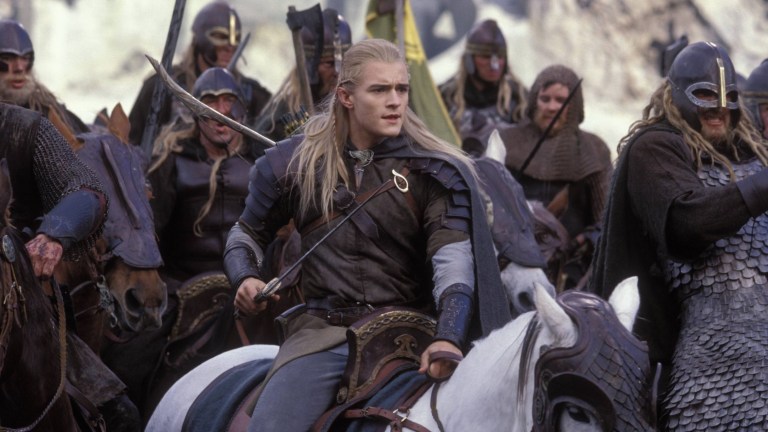The Rings of Power Just Pulled Off a Fun Two Towers Callback
The Rings of Power pays homage to the second part of The Lord of the Rings in an unexpected but fun way!

This Lord of the Rings article contains spoilers for The Rings of Power.
The Rings of Power continues establishing the kingdoms of the Second Age in episode 3. After first showing us the many lands of the Elves and taking us back to the mines of Moria, this week’s episode focuses in on Numenor, the island paradise where Men now rule after fighting alongside the Elves in the war against Morgoth. By the time of The Lord of the Rings books and movies, this kingdom no longer exists, as after a great downfall, the Numenoreans migrated to Middle-earth to form the kingdoms of Arnor and Gondor. The fact that we also meet Elendil (Lloyd Owen) in this episode could be hinting at this eventual fate on the show…
But the inevitable future of Numenor isn’t the only thing teased in “Adar.” Galadriel also confirms what she’s suspected all along: Sauron is indeed still out there and amassing his forces to create a new kingdom in the Southlands of Middle-earth. Indeed, the sigil Galadriel found in the first episode turns out to actually be a map pointing towards the place that will eventually become Mordor, the land where the shadows lie.
Arondir and his fellow captive Elves also encounter the villain who seems to be leading the Orcs on their mission to bring back Sauron: a shadowy figure named Adar (Sindarin — an elf language — for “father”), who some suspect is an alias for the Dark Lord himself. Whether this turns out to be true or not is anyone’s guess as we don’t even get to see Adar’s face before the credits roll. But as far as we know, Adar is a character created exclusively for the Amazon series, as it’s not one of the names Sauron took in Tolkien’s writings about the history of Middle-earth. It does sound kind of like Annatar, though…
It’s also during Arondir’s captivity in the Southlands that The Rings of Power introduces one of the fiercest creatures of Middle-earth, a bloodthirsty warg, the savage wolf-like creatures movie fans first met on the big screen in Peter Jackson’s The Lord of the Rings: The Two Towers. First introduced in Tolkien’s The Hobbit book, wargs have long been the beasts preferred by the Orcs and goblins of Middle-earth, and often use them as mounts to hunt down their prey. In the case of The Rings of Power, the Orcs send out a warg to chomp at their rebellious prisoners.
Although not actually mentioned by name in Tolkien’s three Lord of the Rings books, the wargs most famously appeared in one of the best action sequences in the second film. Fleeing from the capital city of Edoras as Saruman’s Uruk-hai army closes in on the kingdom of Rohan, King Theoden, Aragorn, and the rest of our heroes lead their people to the sanctuary of Helm’s Deep. This of course is just as Saruman hoped. The White Wizard sends out his warg-riders to hunt down the evacuating men, women, and children of Rohan before they make it to the distant stronghold in the mountains.
In the film, we watch as the wargs savagely shred their way through several of Rohan’s royal guards, with Legolas and Gimli winning a narrow but very costly victory. Since, as the last Orc and warg are cut down, they also believe Aragorn has been killed after falling off a cliff during the battle and into the watery depths below. We learn soon after, of course, that Aragorn has survived the fall, taking a ride down a river before rejoining his friends ahead of the big battle at Helm’s Deep in the third act.
While the more “hyena-like” wargs of Jackson’s adaptation are now generally the accepted version of these beasts in terms of appearance, including in The Hobbit films and The Rings of Power, they’re meant to look more like evil wolves in the original Tolkien. In fact, the word “warg” is the Anglicized version of the word “vargr” from Old Norse, which is the foundation for several of Tolkien’s fictional languages. If you want wargs that look more like the wolves they were meant to be, check out the 1977 animated adaptation of The Hobbit.
For everyone else, the saga of The Rings of Power continues next week on Amazon Prime Video.
